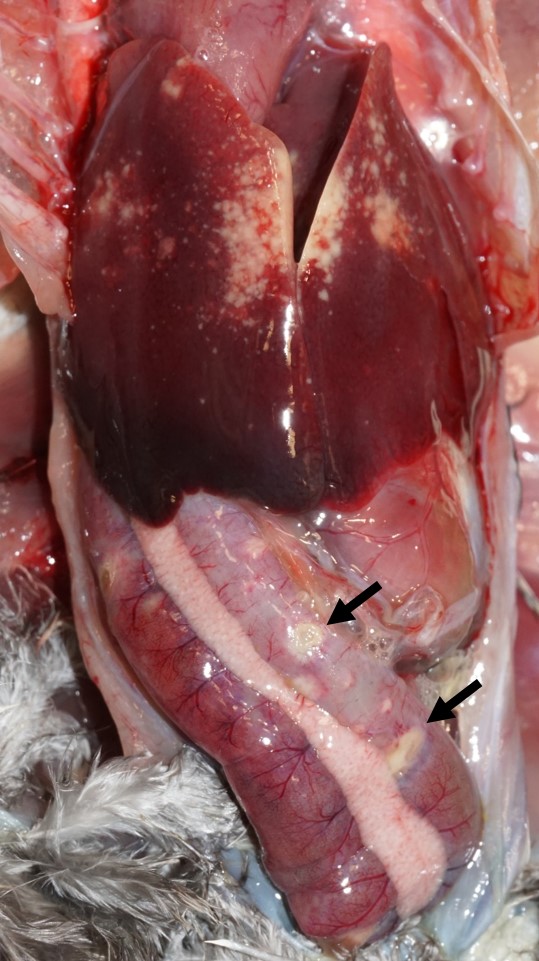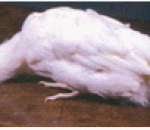Quail disease (ulcerative enteritis) is an acute or chronic infectious disease characterized by listlessness, ruffled feathers, arched back, brownish-yellow diarrhea and ulcerations of the intestinal tract, and focal or diffuse hepatic necrosis.
- Quail disease is caused by the bacterium clostridium colinum. This bacteria is a gram-positive, spore-forming bacillus and the spores are oval in shape and subterminal in position.
- The organism is very resistant to disinfectants. It can persist in soil for many years. The disease may recur in successive broods on the same premises.
- Quails, pheasants and other game birds are susceptible to this disease. Young chickens, turkeys and other domestic fowl are also prone to this disease.
Susceptible hosts
- Qualis and other game birds (pheasants and partridges)
- Young chickens, turkeys and other domestic fowl.
Clinical signs of quail disease
- In acute form, there is sudden death in birds while they are in good flesh.
- Chronically affected birds show signs of
- Anorexia,
- Depression,
- Ruffled feathers
- Humped up poster
- Whitish watery diarrhea
- Emaciation and death.
Postmortem lesions of quail disease
- In acute cases there is evident inflammation in small intestine.
- Blotchy necrotic areas in liver having circular or oval, pinhead to several millimeters size and shape.
- Spleen is usually enlarged and haemorrhagic.
- Yellowish-white, button like ulcers with haemorrhagic borders are found in the lower intestine portion
- Ulcers coalesce and penetrate deep into serosa and may cause perforation.

Differential Diagnosis
- Coccidiosis
- The droppings may be confused with those birds having coccidiosis. Droppings of birds with only ulcerative enteritis never contains blood.
- Sometimes, coccidiosis and ulcertaive enteritis may be observed in the same bird
- Necrotic enteritis
Prevention and Control
- Regularly clean and disinfect the premises.
- Maintain standard management and cleanliness.
- Keep young birds isolated from old birds
- Raising birds on wire is effective preventive measure.
- Bacitracin or penicillin fed at low levels to control the disease.


